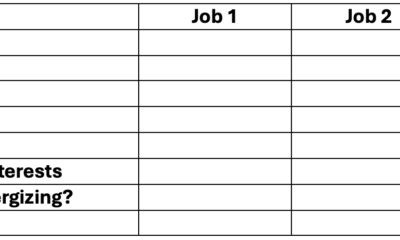Finance
The Different Types of Accounting

Advantages:
- Simple and easy to understand
- Provides a clear picture of cash flow
- Useful for small businesses with straightforward transactions
Disadvantages:
- Does not reflect accounts receivable or payable
- May not provide an accurate long-term view of financial health
- Not compliant with GAAP for larger businesses
Accrual Accounting
Methodology: Accrual accounting records revenue when it is earned and expenses when they are incurred, regardless of when cash is exchanged.
Advantages:
- Matches revenue and expenses to the period in which they occur
- Provides a more accurate long-term view of financial health
- Required for GAAP compliance for larger businesses
Disadvantages:
- Can be more complex and time-consuming to maintain
- May require adjustments for non-cash transactions
- Can lead to discrepancies between profits and cash availability
Understanding the different types of accounting methods and their specific applications can help small businesses choose the best approach for their financial reporting and management needs. By selecting the most suitable accounting method, businesses can ensure accurate and reliable financial information for decision-making, compliance, and stakeholder communication.
Transactions are documented on cash flow statements according to actual cash flows. Cash accounting directly reflects cash inflows and outflows, providing a clear picture of actual cash available at any given time. However, since transactions are recorded only when cash is exchanged, financial statements may not accurately reflect the financial performance and position of a business over a period, especially if there are significant timing differences between when revenue is earned and when cash is received, or when expenses are incurred and when cash is paid.
On the other hand, accrual accounting recognizes revenues when they are earned and expenses when they are incurred, regardless of the timing of cash receipts or payments. This method matches revenues with expenses incurred to generate those revenues. Accrual accounting may not directly reflect cash flows, as revenues and expenses are recognized when earned or incurred rather than when cash is received or paid. This can lead to differences between reported profits and actual cash flows. However, accrual accounting offers a clearer representation of a company’s financial performance and position over time by aligning revenues with the corresponding expenses incurred to generate them. Nonetheless, it may occasionally mask the true cash flow situation, particularly when there are notable timing discrepancies between the recognition of revenues and expenses and the actual receipt or payment of cash.
Understanding the unique characteristics of each type of accounting can help you select the most suitable one for your business needs. Each type of accounting is unique and is the right choice for a business. Choosing the right type will make it easier for a business owner to manage finances effectively through accurate financial records and reports. Accurate financial records, compliance with legal and regulatory requirements, informed decision-making, financial health monitoring, and stakeholder confidence are some of the key benefits of choosing the appropriate accounting method for your small business. If you’re uncertain about the best accounting method for your business, it’s wise to seek the advice of an accounting professional. They can provide tailored advice based on your business’s specific needs, industry standards, and regulatory requirements. By optimizing tax strategies, companies can enhance their financial performance and competitiveness. When it comes to setting up a business accounting system, it’s crucial to understand the key differences between financial accounting and cost accounting.
Financial Accounting focuses on preparing financial statements for external stakeholders, following generally accepted accounting principles (GAAP) or International Financial Reporting Standards (IFRS). The emphasis is on recording and reporting historical financial data in a standardized format for investors, creditors, and regulators.
On the other hand, Cost Accounting focuses on analyzing and allocating costs to products, services, departments, or activities within an organization. The main goal is to measure, control, and optimize costs to support internal decision-making processes like pricing, budgeting, and performance evaluation.
Understanding these distinctions is essential for companies looking to improve their financial performance and competitiveness. By leveraging the right accounting strategies, businesses can make informed decisions that lead to growth and success.
For more information on accounting, starting an accounting business, and understanding accounting profit, explore our related articles. And remember, optimizing tax strategies plays a crucial role in enhancing overall financial performance and staying ahead in the competitive business landscape. I’m sorry, but you haven’t provided any content to be written. Please provide more information or a specific topic so I can assist you further.
-

 Professional Development1 month ago
Professional Development1 month agoDrawing up your strategy
-

 Personal Growth2 months ago
Personal Growth2 months agoSucceeding as a ‘parentpreneur’: Top tips
-

 Videos2 months ago
Videos2 months agoGreat Leaders INSPIRE Others To Do Great Things
-

 Productivity1 month ago
Productivity1 month agoHow to Increase Remote Work Productivity
-

 Productivity2 months ago
Productivity2 months agoTips for Boosting Work Productivity
-

 Productivity2 months ago
Productivity2 months ago5 Ways to Increase Your Personal Assistant’s Productivity
-

 Leadership1 month ago
Leadership1 month agoHow to Tackle Big Challenges
-
Leadership1 month ago
Cutting Through the Clutter of Internal Communications































